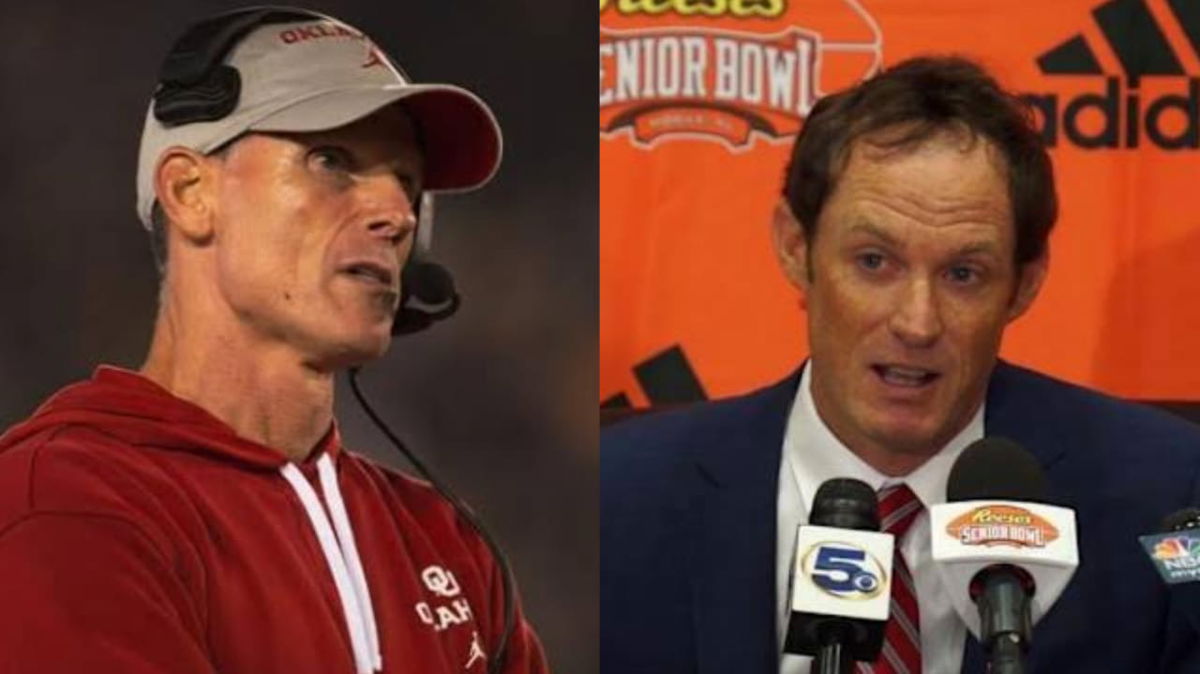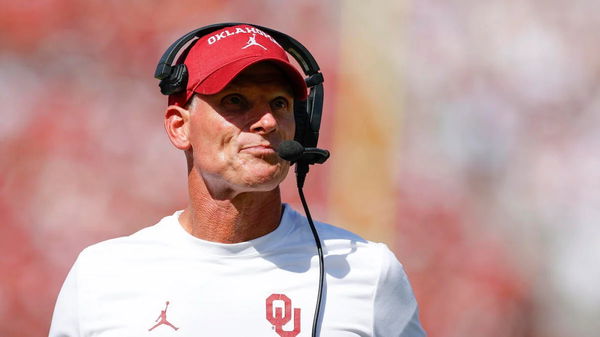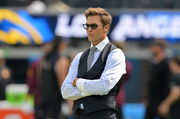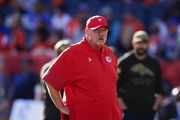

When the University of Oklahoma brought Jim Nagy on board as its General Manager for Football, it marked a clear shift toward building a more professional structure around the program. Nagy, who previously gained national recognition as the Executive Director of the Reese’s Senior Bowl, was no stranger to evaluating talent and managing complex football ecosystems. In many ways, Nagy’s presence reflects how the Sooners are positioning themselves to compete at the highest level in an era defined by rapid change and heightened expectations. But what does Nagy himself see as the next big shift coming to college athletics?
Watch What’s Trending Now!
That question came up when University President Joseph Harroz asked Nagy directly on OU’s official YouTube podcast. “What do you believe the next major change is that we’re going to see in college sports?” Nagy didn’t hesitate. “It might just be a CBA,” he replied, referencing the idea of collective bargaining. He elaborated, pointing to two pressing challenges: first, the lack of transparency in negotiations.
“One, the lack of transparency. I have friends in the NFL who call me asking about how I like the job. I said, it’s great. Love it. Love everything about it. I’m like, but for you guys, you go out in the marketplace, and you want a starting left tackle, you know the range of what you’re going to be paying for that left tackle. Right now, the lack of transparency is all over the place when it comes to some of these negotiations.”
ADVERTISEMENT
And second, the escalating cost of acquiring high school players. Nagy drew a comparison to the NFL marketplace, where teams know the salary range for a position like left tackle, whereas in college football, numbers are “all over the place.” This inconsistency, he argued, creates instability and undermines long-term planning. So how does this lack of structure affect the teams directly?
Nagy explained that the issue runs deeper than just money; it impacts team chemistry. He noted that coaches across the SEC and Big Ten have voiced concerns about freshmen entering locker rooms with outsized compensation packages, sometimes exceeding what juniors and seniors are earning. “The cost of acquisition is so high that then your veterans, your juniors, and seniors are finding out what their freshmen are making. Some coaches have talked about they’ve lost their locker room because they’re paying all the young guys,” Nagy said.
For Oklahoma, the program has even walked away from recruits in the 2026 cycle because the financial numbers became untenable. That decision wasn’t just about money; it was about preserving the culture. So what role does leadership play in maintaining that delicate balance?
ADVERTISEMENT

ADVERTISEMENT
Yet, Nagy credited head coach Brent Venables for building a strong foundation at OU, emphasizing that while the staff has created a culture worth protecting, his job carries the responsibility of not letting salary imbalances undo it. “In my position, I can scr-w that up real quickly if our salaries get out of wha-k,” he admitted. With that in mind, Nagy’s call for a structured rookie pay scale or freshman cap points toward solutions that could stabilize both finances and locker room dynamics. Could such measures be the cornerstone of the next era in college sports governance?
ADVERTISEMENT
Jim Nagy explains Oklahoma’s biggest selling point
When University of Oklahoma President Joseph Harroz sat down with General Manager for Football Jim Nagy, the conversation turned from dollars and recruiting budgets to something far more personal. Harroz asked a simple but pointed question. “When we get past the dollars, what do we tell players? What do we believe in that makes Oklahoma special? It was a moment that cut through the noise of NIL negotiations and transfer portal buzz, and Nagy’s answer was immediate.
“Our biggest sell is family,” Nagy said. He pointed to the upcoming Michigan game, where over 40 four- and five-star recruits were set to visit Norman. For Nagy, the key isn’t just getting elite players on campus; it’s letting them feel the difference. “You do, you feel it,” he emphasized. According to him, while plenty of programs across the country advertise a family environment, Oklahoma has something more tangible, something built brick by brick under head coach Brent Venables. So what exactly gives OU’s message weight when others make similar claims?
Top Stories
Tom Brady Makes Career Announcement for Vegas as Pete Carroll Addresses Losing Raiders Locker Room

Cam Newton Makes NFL Return Conditions Clear to 32 Teams as Panthers Legend Confirms Retirement Stance

Dolphins’ Jordyn Brooks Publicly Calls Out Locker Room Over ‘Poor’ Performance Against Steelers

Caitlin Clark Shows Concerning Signs vs. Kelsey Plum During USA Camp Debut, per National Reporter

Scottie Scheffler Makes Critical Health Announcement After He Ended PGA Tour Hiatus

Andy Reid Makes Final Decision on Signing New Chiefs QB After Patrick Mahomes’ ACL Injury

ADVERTISEMENT

Nagy credited the SOUL Mission program, “What Brent has built. We talk about SOUL Mission being the front porch of our program, which certainly means a lot to the parents,” which focuses on player development beyond football, as the “front porch” of OU’s culture. For parents, he explained, that initiative carries as much weight as the game-day atmosphere. Could this authentic sense of belonging be Oklahoma’s true competitive edge in recruiting wars?
ADVERTISEMENT
ADVERTISEMENT
ADVERTISEMENT
ADVERTISEMENT

